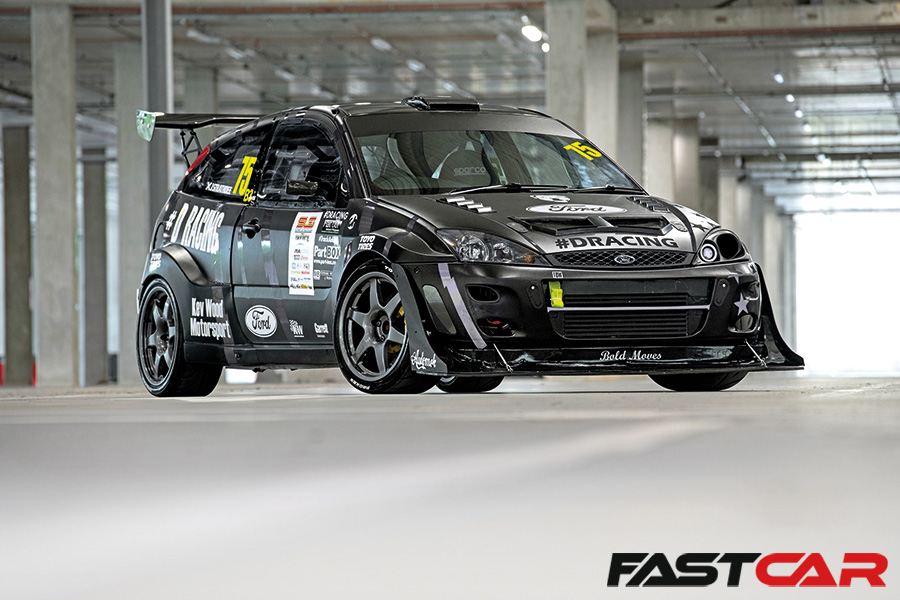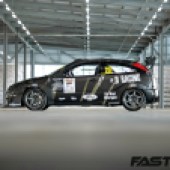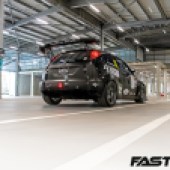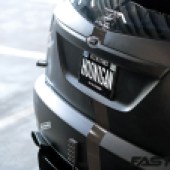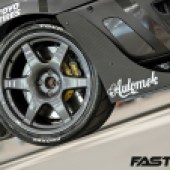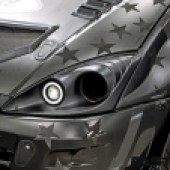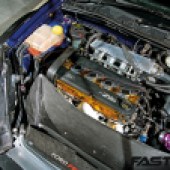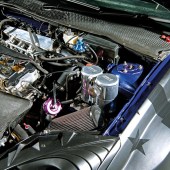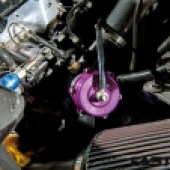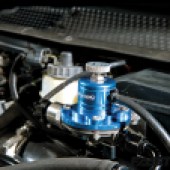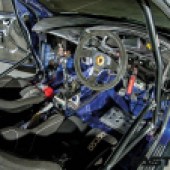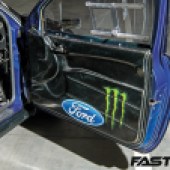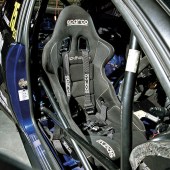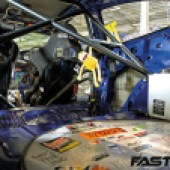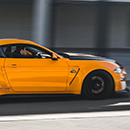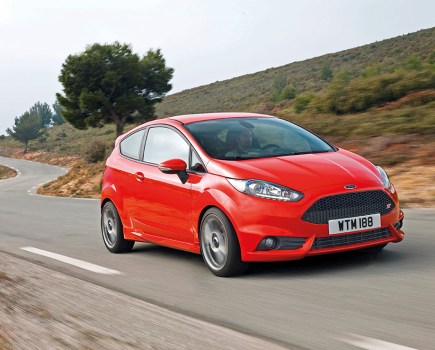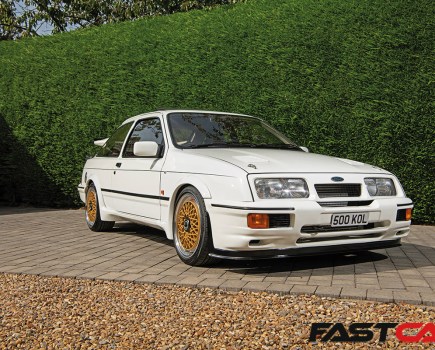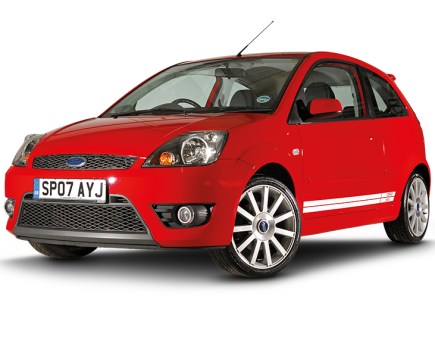Born as a box-stock RS, this muscular tuned MK1 Ford Focus has morphed into a track-terrorising 530bhp monster.
Jack Strathdee owns this outrageous track-focused, tuned Ford Focus RS Mk1, and it’s hard to believe it started out as an immaculate, low-mileage example in standard form when he first bought it. But plenty has changed.
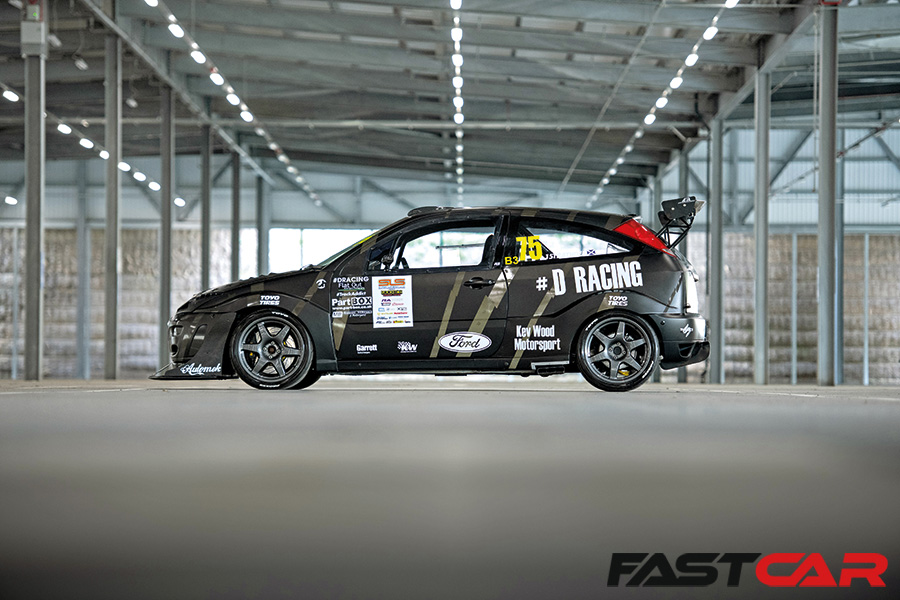
He says, “It’s been a good ten years in the making. And it’s never finished, as I’m always trying to squeeze reliable power out of it.”
Since Jack has been evolving the build for so long, it will be no surprise to learn that this isn’t the first time we’ve seen him in Fast Ford – it was last featured this tuned Ford Focus RS Mk1 in November 2014. Back then, the RS was pushing out well over 500bhp with some serious tweaks, but was still a road-ready track car with Imperial Blue paint.
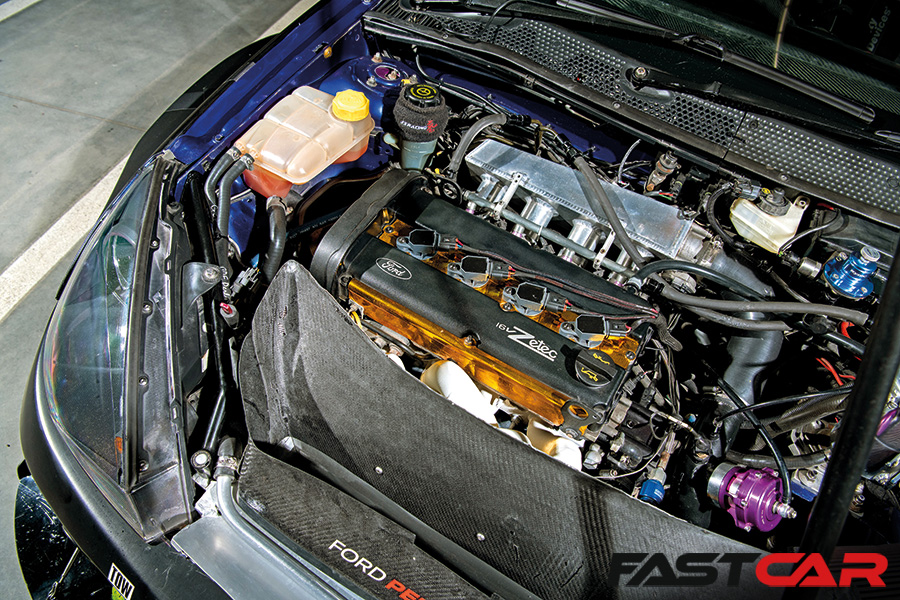
Although a lot of the running gear remains the same, the rest of the build has taken a serious turn down the hardcore route, as the car has evolved to become lighter, faster and even more capable.
To recap, Jack bought the Focus in March 2009 as a mint, totally standard car with just under 18,000 miles on the clock. He saw it in an advert in the local paper.
The plan was to leave it standard and enjoy it how Ford intended, although a remap to 280bhp followed, and Jack admits it was the perfect balance at that point. But things changed after a trip to the Nürburgring in 2011, and he’s been steadily building the car and developing the package ever since.
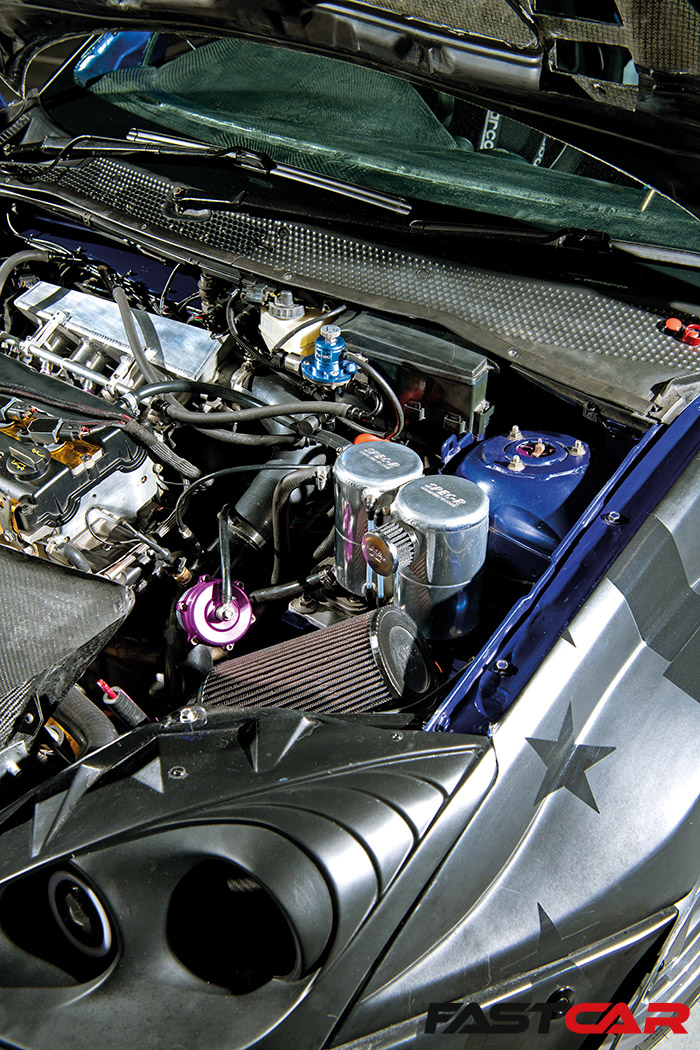
While the engine is still the same 500bhp-plus Zetec that was built by Ian Howell, matched with custom KW Automotive coilovers, adjustable arms, AP Racing big brakes and a whole lot more, in the last few years, Jack has concentrated on making the car faster and more efficient.
With that in mind, the first huge change was a diet to make it lighter and improve the power-to-weight ratio.
Jack reveals, “I’ve chopped out every little thing that doesn’t need to be there, and it’s a complete composite body now. There are no steel panels left on the car; everything is ether carbon fibre or Kevlar.”
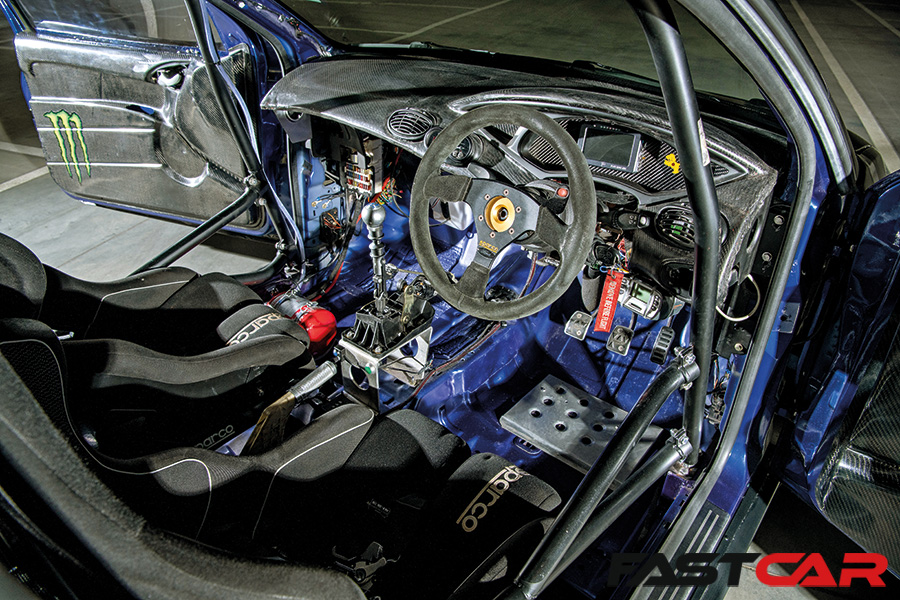
That’s no exaggeration, as the tuned Ford Focus RS Mk1 is now fitted with lightweight Kevlar bumpers, front wings, doors, rear quarter panels and tailgate, while the roof and bonnet are made from carbon fibre.
As a result, it weighs in at just 1050kg; that’s nearly 250kg lighter than standard, and makes a huge difference.
“It’s definitely noticeable on track because it makes the car so much more nimble and I’m able to throw it about without much effort, which is a massive plus,” Jack says.
There were other benefits to the stripped- back diet too. While the rear quarter panels were removed, the inner rear arch tubs were modified to allow for a much wider tyre. To further improve grip levels, the new bumper was fitted with the same splitter setup found on Pat Doran’s Ford RS200 rallycross car, and the rear diffuser and wing work in harmony to create more rear-end grip.
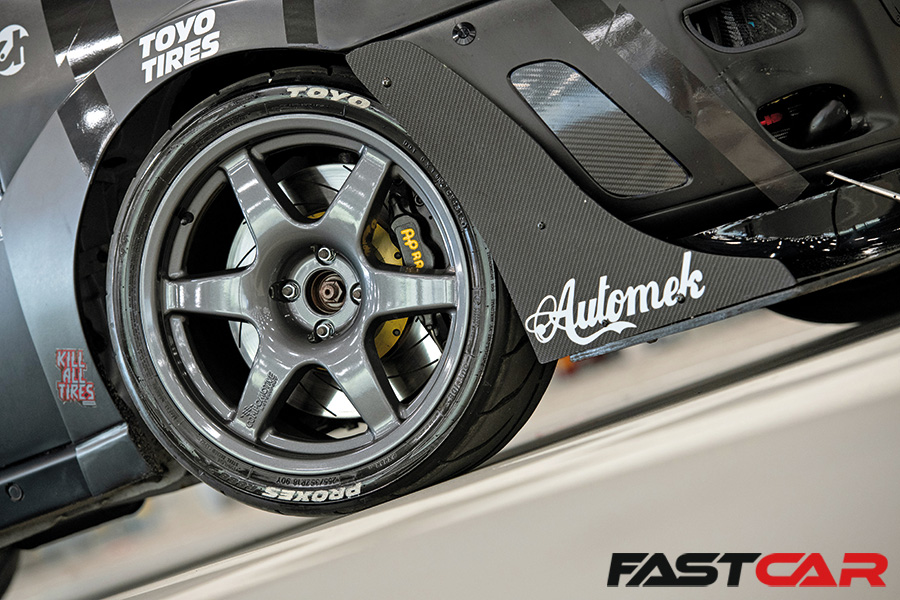
Reducing the weight has also helped Jack’s other main focus in recent years on track, which is dealing with the heat associated with a big-power turbo engine working hard.
He explains, “Heat management has been the biggest battle. Getting the car to stay cool enough for one lap wasn’t an issue, but ten minutes of hard action and the car would be ready to boil over.”
To solve these issues, Jack took the logical approach and researched how the professionals combat heat management.
He says, “I took a long, hard look at the WRC Focus of the era and then got my head under every factory race car I could to see how the exhausts and radiators were packaged.”
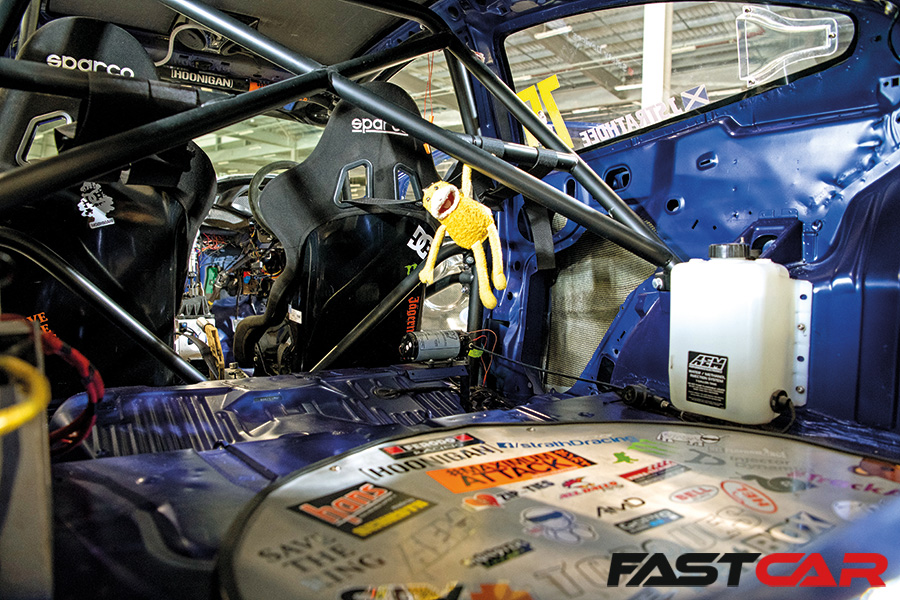
The biggest thing he learnt from his investigation work was the need to not only guide air directly into the radiators but to also create a path for it to leave. And, on top of that, allowing it to drag air out with some clever angles that create pressure zones.
That’s why there’s a lot of clever ducting and venting under the bonnet, which was no easy task.
Jack says, “A front-wheel drive hatchback wasn’t blessed with a long bonnet and loads of room, and I had to move the radiator so far forward that I notched 2in out of the headlights. This allowed me to move the radiator nearly 5in forward and build custom ducting for the radiator to vent out through the WRC bonnet.”
The hard work paid off and the car is much more efficient at maintaining temperatures for longer, although there’s more to the bigger picture, as Jack has discovered. For instance, changing to a larger 3.5in exhaust has allowed him to keep the same power level but reduce 1-2psi of boost, which helps to run cooler.
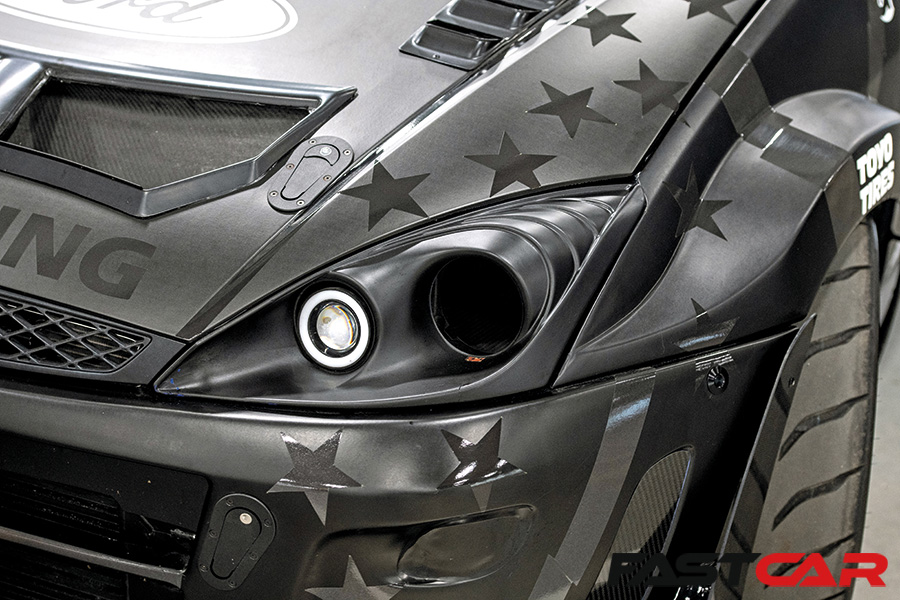
The recent improvements have certainly ensured the car has become more capable, as in 2019 Jack entered the Cadwell Park Time Attack, in the Run What You Brung open class.
“I was in the top five cars, with others being mainly high-power all-wheel-drive Mitsubishi Evos and Nissan GT-Rs,” he recalls. “I had previously hurt the clutch and gearbox by mis-shifting, so could only run low boost but even with a wet, slippery track I still managed to win in qualifying. And to prove it wasn’t a fluke, I won the final as well.”
As you might imagine, the car is far from finished, as Jack tells us there are plans to change the roll cage to lighter T45 material and to rewire it with a stripped-back motorsport specification loom to save even more weight. There have also been more transmission issues, which have been ongoing since Jack’s tuned Ford Focus RS Mk1 was last featured.
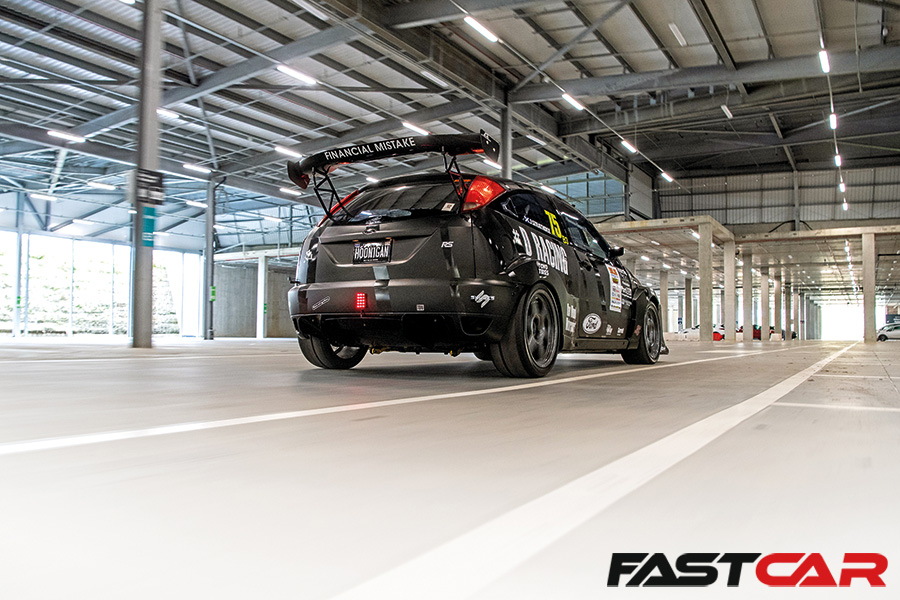
“I’ve been through a gearbox every two or three events, including several RS gearboxes, and now I’m on gearbox number three of the uprated internal units. The shear power seems to kill them quickly,” he says.
To tackle the issues once and for all, Jack has decided to do things properly and convert to a VW DSG gearbox, which will not only let him put through the power it without breaking, but will also allow faster shifts, giving the best of both worlds.
Although it’s a pretty serious conversion, the benefits are huge. And, besides, we’ll need something to talk about in the next feature when this tuned Ford Focus RS Mk1 evolves that little bit further…
Feature from Fast Ford magazine. Words: Simon Holmes. Photos: Ade Brannan.
Tech Spec: Tuned Ford Focus RS Mk1
Engine:
2048cc Black-top Zetec built by Ian Howell, forged pistons, steel rods, Ian Howell intake manifold, Nortech Performance exhaust manifold, Garrett GTX30 turbo, TiAL blow-off valve and wastegate, Calum Hayes 3.5in exhaust with a DR Gas Nascar exhaust tip, Spec-R intercooler, OPI Racing external oil pump, AEM meth injection, Syvecs ECU, Mk2 RS drive-by-wire throttle body conversion
Power:
530bhp and 490lb.ft
Transmission:
MTX-75 five-speed, Quaife five-speed dog engagement, KAAZ 1.5-way plated LSD, Haines Motorsport shifter, Sachs four-paddle clutch
Suspension:
Bespoke KW Automotive Competition two-way coilovers, Hardrace toe and camber arms, Powerflex caster and camber mounts
Brakes:
Front: AP Racing six-pot callipers with 355mm discs, Pagid RS pads; rear: Focus RS callipers with Pagid RS pads
Wheels & Tyres:
18x9in Compomotive MO6, 4×108 with ET20 offset with 255/35/18 R888R tyres for dry, 18x9in Team Dynamic 1.2s ET20 offset with 255/35/18 wet tyres for wet
Exterior:
Xsport Racing Kevlar front wings, doors, front bumper, rear quarter panels and boot, RS200 splitter, JTK carbon fibre roof, roof vent, custom arch tubs, APR rear wing on custom uprights, polycarbonate windows, heated front screen, cold-air intake passenger headlight, rear diffuser, wrapped matt black with reflective lightning stripe design
Interior:
Sparco Pro 2000 seats, stripped interior with all additional wiring removed, custom carbon dashboard, Plex digital dash, Stack boost gauge and AFR gauge, Sparco steering wheel, Lifeline hub, WRC carbon door cards, seven-point Safety Devices roll cage, Lifeline fire extinguisher system, electrical cut-off

